Qin Shi Huang (259 c. - 210.c), Ying Zheng, was the son of King Zhuangxiang of Qin State. He inherited the throne at thirteen and became the first emperor in Chinese history at the age of thirty-nine. During almost four decades’ reign, Qin Shi Huang proved himself to be a brilliant politician, strategist, reformist, and ruthless man. He established the first centralized country in Chinese history and entitled himself Emperor.
Resume of Qin Shi Huang
Name: Ying Zheng/Zhao Zheng, Qin Shi Huang, Shi Huang Di  Nationality: Han
Citizenship: Qin
Birthplace: Handan, capital of Zhao State (today’s Handan city, Hebei Province)
Birth: 259 B.C
Death: 210 B.C
Occupation: Qin Dynasty Emperor
Belief: Legalism
Personal Achievements: 1. Unified China for the first time; 2. Defeated Baiyue in the south and Xiongnu in the north; 3. Established the prefecture system; 4. Standardized the characters and scripts, weights, and measures, and regulated the gauges for all carriages with the same size; 5. Built the Great Wall.
Reign Period: 246 B.C - 210B.C
Burial: Lishan Mausoleum accompanied by Terracotta Warriors and Horses
Nationality: Han
Citizenship: Qin
Birthplace: Handan, capital of Zhao State (today’s Handan city, Hebei Province)
Birth: 259 B.C
Death: 210 B.C
Occupation: Qin Dynasty Emperor
Belief: Legalism
Personal Achievements: 1. Unified China for the first time; 2. Defeated Baiyue in the south and Xiongnu in the north; 3. Established the prefecture system; 4. Standardized the characters and scripts, weights, and measures, and regulated the gauges for all carriages with the same size; 5. Built the Great Wall.
Reign Period: 246 B.C - 210B.C
Burial: Lishan Mausoleum accompanied by Terracotta Warriors and Horses
Early Years of Qin Shi Huang
Qin Shi Huang Ying Zheng was born in January in Handan (the capital of Zhao State). As a middle son to King Zhuangxiang, Qin Shi Huang was called Zhao Zheng as he 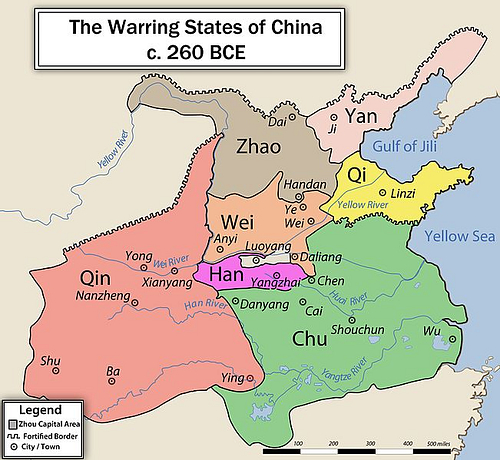 sought refuge in his mother, Zhaoji’s family, at early age. In 247 B.C, with the death of King Zhuangxiang, Ying Zheng was made King Qin at 13. A powerful minister named Lv Buwei served as the prime minister to assist the young monarch. Qin Shi Huang reluctantly respected him as Zhong Fu (almost equal to father). Eight years later, Qin Shi Huang reached 21 and began to rule himself. Lv Buwei became an obstacle, and his secret affair with Qin Shi Huang’s mother, Dowager Zhao, would only make things worse. Qin Shi Huang managed to restrain Lv's power and exiled him. Lv was also a smart man. He gifted a fake eunuch named Liao Du, who was also one of his hangers-on, to Dowager Zhao before leaving the court. This way, he could still have a certain influence over the dowager. Anyway, Qin Shi Huang successfully began his reign.
Later, Dowager Zhao suggested she spend her late years in Yongcheng. Under the help of Dowager Zhao, Liao Du was bestowed with the title of Lord Changxin and a few fiefs. Shortly after, Dowager Zhao gave birth to two bastards, and Liao Du grew to be arrogant. One day, the drunk Liao Du scorned a minister: “I’m the step-father of King Qin. How dare you messing with me!” The minister held a grudge and revealed the secret relationship between Dowager Zhao and Li Du. Qin Shi Huang was enraged. Liao Du panicked when he heard that his relationship with Dowager Zhao was uncovered to Qin Shi Huang, so he decided to launch a coup. However, his scheme was leaked to the emperor, who arranged soldiers in an ambush. The result was that Liao Du failed and was sentenced to death. Dowager Zhao was house-arrested in Fuyang Palace in Yongcheng. Qin Shi Huang’s two bastard brothers were put to death, and the former prime minister Lv Buwei was exiled.
sought refuge in his mother, Zhaoji’s family, at early age. In 247 B.C, with the death of King Zhuangxiang, Ying Zheng was made King Qin at 13. A powerful minister named Lv Buwei served as the prime minister to assist the young monarch. Qin Shi Huang reluctantly respected him as Zhong Fu (almost equal to father). Eight years later, Qin Shi Huang reached 21 and began to rule himself. Lv Buwei became an obstacle, and his secret affair with Qin Shi Huang’s mother, Dowager Zhao, would only make things worse. Qin Shi Huang managed to restrain Lv's power and exiled him. Lv was also a smart man. He gifted a fake eunuch named Liao Du, who was also one of his hangers-on, to Dowager Zhao before leaving the court. This way, he could still have a certain influence over the dowager. Anyway, Qin Shi Huang successfully began his reign.
Later, Dowager Zhao suggested she spend her late years in Yongcheng. Under the help of Dowager Zhao, Liao Du was bestowed with the title of Lord Changxin and a few fiefs. Shortly after, Dowager Zhao gave birth to two bastards, and Liao Du grew to be arrogant. One day, the drunk Liao Du scorned a minister: “I’m the step-father of King Qin. How dare you messing with me!” The minister held a grudge and revealed the secret relationship between Dowager Zhao and Li Du. Qin Shi Huang was enraged. Liao Du panicked when he heard that his relationship with Dowager Zhao was uncovered to Qin Shi Huang, so he decided to launch a coup. However, his scheme was leaked to the emperor, who arranged soldiers in an ambush. The result was that Liao Du failed and was sentenced to death. Dowager Zhao was house-arrested in Fuyang Palace in Yongcheng. Qin Shi Huang’s two bastard brothers were put to death, and the former prime minister Lv Buwei was exiled.
Eliminate Other Six States and Achieve Unification
Han and Zhao States
Before declaring war against Zhao State, Qin Shi Huang consented to the strategy of sowing discord between Yan and Zhao States and then attacking Zhao State on the excuse of assisting Yan State when they fight with each other.
In winter 236 B.C, Qin Shi Huang sent general Wang Jian to attack Eyu, a strategic spot blocking the Qin army from attacking Handan from the western side. When the Qin army made it to Handan, they met fierce resistance from the Zhao army.
In 234 B.C, Qin Shi Huang resent the army to attack the southern territories of Zhao State. As a result, the Qin army suffered a heavy blow. 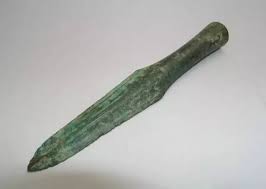 In 232 B.C, Qin Shi Huang reorganized his army and sent two troops to attack Zhao State. The Qin army launched three significant attacks, which were all thwarted by Zhao general Li Mu. Unfortunately, the Zhao army was short of soldiers. Other states’ support was in great need. Qin Shi Huang sensed Zhao State’s intention and made the first move. He sent a lot of machinators to lobby and isolate Zhao State.
In 230 B.C, Qin Shi Huang decided to eliminate the Han State, and he did merge the Han territory into Qin State. In the same year, there was a severe drought in Zhao State. Qin Shi Huang grasped the opportunity and launched another attack the next year.
In 229 B.C, the Qin army had been fighting in Zhao soil for a year, but still made no progress. Zhao general Li Mu was an excellent general. Later, the Qin army bribed people in a high place to trick King Zhao into dismissing Li Mu. Not surprisingly, King Qian of Zhao did exactly what Qin Shi Huang had wanted. The Qin army conquered Zhao State in 228 B.C.
In 222 B.C, a small Dai State set up by the crown prince Jia of the former Zhao State was subjugated by Qin State as well.
In 232 B.C, Qin Shi Huang reorganized his army and sent two troops to attack Zhao State. The Qin army launched three significant attacks, which were all thwarted by Zhao general Li Mu. Unfortunately, the Zhao army was short of soldiers. Other states’ support was in great need. Qin Shi Huang sensed Zhao State’s intention and made the first move. He sent a lot of machinators to lobby and isolate Zhao State.
In 230 B.C, Qin Shi Huang decided to eliminate the Han State, and he did merge the Han territory into Qin State. In the same year, there was a severe drought in Zhao State. Qin Shi Huang grasped the opportunity and launched another attack the next year.
In 229 B.C, the Qin army had been fighting in Zhao soil for a year, but still made no progress. Zhao general Li Mu was an excellent general. Later, the Qin army bribed people in a high place to trick King Zhao into dismissing Li Mu. Not surprisingly, King Qian of Zhao did exactly what Qin Shi Huang had wanted. The Qin army conquered Zhao State in 228 B.C.
In 222 B.C, a small Dai State set up by the crown prince Jia of the former Zhao State was subjugated by Qin State as well.
Wei State
In 225 B.C, the already weak Wei State was flooded by the Qin army, and King Jia of Wei offered his kingdom to Qin State.
Chu State
In 225 B.C, Qin Shi Huang sent 200,000 soldiers to attack Chu State but was defeated. He then changed the general and resent 600,000 men to re-attack the Chu army. Qin army won a victory.
In 222 B.C, Lord Yue of Chu State surrendered to Qin, and Chu soil was merged into Qin State.
Yan State
During the Qin army attacking Zhao State, King Xi of Yan State was in a constant anxiety state. His son Dan came up with a desperate idea of assassinating Qin Shi Huang. He 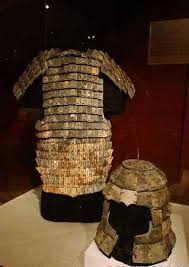 sent a famous assassin named Jing Ke to perform the task in 227 B.C. However, the operation failed, and consequently, Qin Shi Huang was infuriated.
In 226 B.C, the Qin army broke into Ji (today’s Beijing), the capital of Yan State, and chased the prince Dan to Yanshui River (today’s Hunhe River of Liaoning province). King Xi of Yan fled to Liaodong and offered the head of prince Dan to Qin Shi Huang in exchange for the peace between Yan and Qin. However, he was woefully wrong. Qin army continued to attack other parts of Yan.
In 222 B.C, King Xi was captured by the Qin army, and Yan State became part of Qin territory.
sent a famous assassin named Jing Ke to perform the task in 227 B.C. However, the operation failed, and consequently, Qin Shi Huang was infuriated.
In 226 B.C, the Qin army broke into Ji (today’s Beijing), the capital of Yan State, and chased the prince Dan to Yanshui River (today’s Hunhe River of Liaoning province). King Xi of Yan fled to Liaodong and offered the head of prince Dan to Qin Shi Huang in exchange for the peace between Yan and Qin. However, he was woefully wrong. Qin army continued to attack other parts of Yan.
In 222 B.C, King Xi was captured by the Qin army, and Yan State became part of Qin territory.
Qi State
Qi State used to be the second powerful state outside Qin State. However, it was shortly seized by Yan State, and since then, Qi State became weak. However, Qi State was far from Qin State, giving it some more peaceful years. The prime minister of Qi State, Hou Sheng, received a lot of bribery from the Qin state. Therefore, he persuaded King Jian of Qi to stay out of the battle between Qin and other states.
In 221 B.C, Qin Shi Huang already controlled the other five states. He sent Qin troops to attack Qi capital Linzi, which proved to be very easy. By now, all six states were conquered by Qin State.
Rule as an Emperor
In 221 B.C, Qin Shi Huang unified China. He thought his current title of King Qin couldn’t match with his feats. 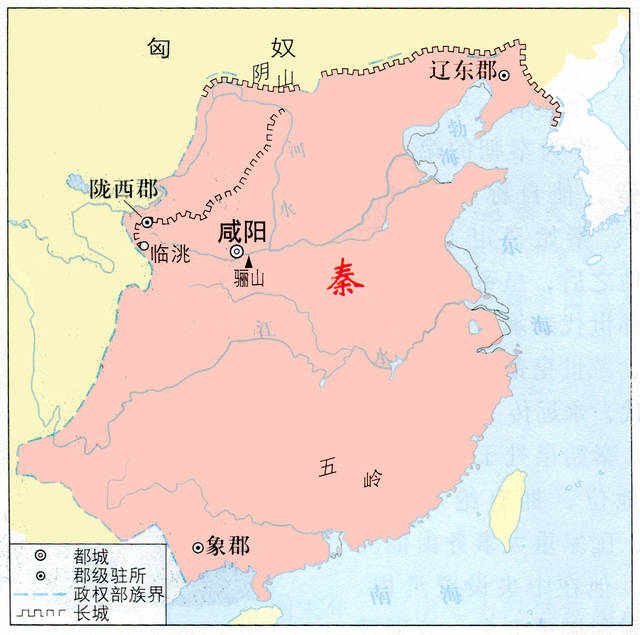 So be entitled himself the Shi Huang Di (the first emperor). Hecontinued to rule under the guidance of legalism. The whole country was divided into 36 prefectures (which later was added to 46 prefectures), and the Xianyang was made the capital city. There are three ministers, Chengxiang (prime minister), Yushi, and Taiwei, arranged to assist Qin Shi Huang in court. Qin Shi Huang himself appointed officials to govern the local counties.
Qin Shi Huang also standardized the measures, currencies, and characters to consolidate the regime, which significantly promoted business communication within countries. He also ordered the Great Wall to be built in defense of Xiongnu. New ways of Chidao and Zhidao were constructed to connect counties. To prevent old aristocrats of the perished states from launching uprisings, Qin Shi Huang also forced them to Xianyang or remote places in southwest areas.
So be entitled himself the Shi Huang Di (the first emperor). Hecontinued to rule under the guidance of legalism. The whole country was divided into 36 prefectures (which later was added to 46 prefectures), and the Xianyang was made the capital city. There are three ministers, Chengxiang (prime minister), Yushi, and Taiwei, arranged to assist Qin Shi Huang in court. Qin Shi Huang himself appointed officials to govern the local counties.
Qin Shi Huang also standardized the measures, currencies, and characters to consolidate the regime, which significantly promoted business communication within countries. He also ordered the Great Wall to be built in defense of Xiongnu. New ways of Chidao and Zhidao were constructed to connect counties. To prevent old aristocrats of the perished states from launching uprisings, Qin Shi Huang also forced them to Xianyang or remote places in southwest areas.
Burn Books and Bury Scholars Alive
After achieving the unification, Qin Shi Huang collected many scholars, talents, and warlocks, who told him that Penglaim Fangzhang and Yingzhou were three islands where deities lived. There were elixirs in these places. Qin Shi Huang was so tempted that he sent thousands of boys and girls here searching for elixirs.
During 219 B.C - 215 B.C, Qin Shi Huang himself made several journeys to eastern coastal areas. Everywhere he went, grand celebrations were held, and inscriptions were 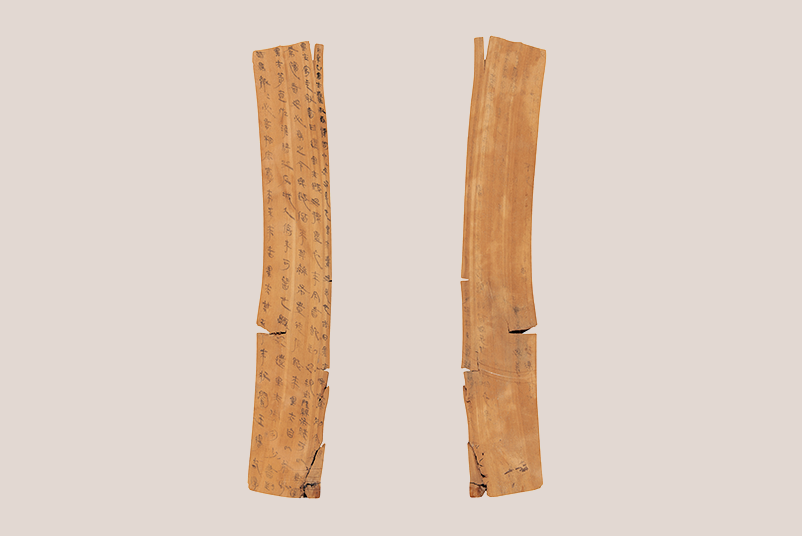 made. Some Confucian scholars disagree with Qin Shi Huang’s extravagance and the quest for elixirs. They also reproached other policies Qin Shi Huang set up. The prime minister Li Si suggested Qin Shi Huang burn those classics that were not teaching legalism. Therefore, tons of classics were burned, and people tried to protect such books were punished.
Meanwhile, the warlocks and talents sent out questing for elixirs came back with nothing useful. Qin Shi Huang felt being deceived. In anger, he ordered those who were involved in being bury alive. Over 460 men were buried.
In 214 B.C, Qin Shi Huang ordered a grand palace named Epang Palace to be built. The construction was massive. Over 700,000 men were needed for the building every year, and the total population of the Qin dynasty was only 2,000,0000 people. However, archaeologists revealed that the palace was never finished. Only the foundation was laid in the Qin Dynasty.
made. Some Confucian scholars disagree with Qin Shi Huang’s extravagance and the quest for elixirs. They also reproached other policies Qin Shi Huang set up. The prime minister Li Si suggested Qin Shi Huang burn those classics that were not teaching legalism. Therefore, tons of classics were burned, and people tried to protect such books were punished.
Meanwhile, the warlocks and talents sent out questing for elixirs came back with nothing useful. Qin Shi Huang felt being deceived. In anger, he ordered those who were involved in being bury alive. Over 460 men were buried.
In 214 B.C, Qin Shi Huang ordered a grand palace named Epang Palace to be built. The construction was massive. Over 700,000 men were needed for the building every year, and the total population of the Qin dynasty was only 2,000,0000 people. However, archaeologists revealed that the palace was never finished. Only the foundation was laid in the Qin Dynasty.
Death of Qin Shi Huang
In 210 B.C, Qin Shi Huang died in Shaqiu Palace (Guangzong, Hebei province) during his fifth journey to the east with no will left. His private eunuch Zhao Gao persuaded Hu 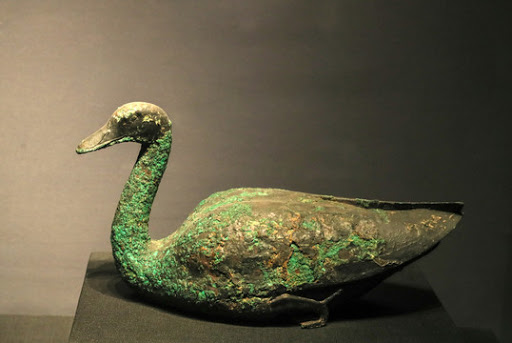 Hai (the eighteenth son of Qin Shi Huang) to ascend the throne and threatened the prime minister Li Si to agree. He also forged the imperial edict saying that Qin Shi Huang made Hu Hai the next emperor and demanded Fu Su, the eldest son of Qin Shi Huang, to commit suicide. To prevent any fuss on the way back to Xianyang, Zhao Gao suppressed the death of Qin Shi Huang. It was in July, and Qin Shi Huang’s corpse rotted quickly. To cover the smell, Zhao Gao and Hu Hai ordered abalones to be loaded on the cart. When they made it to Xianyang, Zhao Gao and Hu Hai buried Qin Shi Huang to Lishan Mausoleum. Hu Hai became the emperor, and Zhao Gao became the real power-holder.
Hai (the eighteenth son of Qin Shi Huang) to ascend the throne and threatened the prime minister Li Si to agree. He also forged the imperial edict saying that Qin Shi Huang made Hu Hai the next emperor and demanded Fu Su, the eldest son of Qin Shi Huang, to commit suicide. To prevent any fuss on the way back to Xianyang, Zhao Gao suppressed the death of Qin Shi Huang. It was in July, and Qin Shi Huang’s corpse rotted quickly. To cover the smell, Zhao Gao and Hu Hai ordered abalones to be loaded on the cart. When they made it to Xianyang, Zhao Gao and Hu Hai buried Qin Shi Huang to Lishan Mausoleum. Hu Hai became the emperor, and Zhao Gao became the real power-holder.
Qin Shi Huang Mausoleum
Not long after Qin Shi Huang ascended the throne, he ordered his mausoleum, Lishan Mausoleum, to be designed and built. It took almost four decades (246.c - 208.c) and 700,000 men annually for the construction. According to historical chronicles, the mausoleum was extremely luxuriant. With a parameter of 2000 meters and a height of 55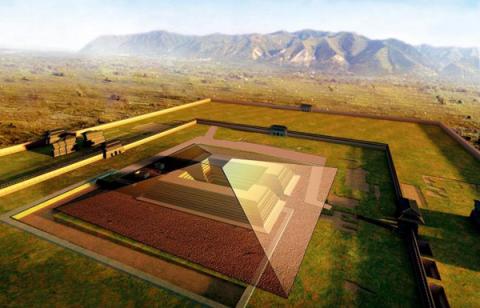 meters, the entire mausoleum has a ceiling cast by copper and encrusted with pearls, representing the universe with planets, and a vast expanse of seas and rivers made of mercury. Outside the mausoleum, there were two layers of walls separating the royal palace and the imperial city. Historical records tell us that there were over thousands of palaces, burial pits, and small tombs filled with treasures and relics. Not far from the mausoleum, an underground Terracotta Army was supposed to protect Qin Shi Huang in the underworld. To prevent any future grave-robbing, Qin Shi Huang also demanded all kinds of gears and tricks be facilitated inside the tomb. After the tomb was complete, the tomb's exits were sealed, and laborers were buried alive (under Hu Hai’s command). Qin Shi Huang had made his point very clear. He regarded himself as an emperor even in the afterlife. To protect his reign, he built the entire human world he knew underground, even the Qin army.
Terracotta Warriors and Horses Museum is the largest underground military museum. It has a perfect layout yet with a peculiar structure. At present, there are three pits excavated and over 8000 terracotta figures discovered. All the figurines were richly decorated, colored, carved, and specifically arranged.
meters, the entire mausoleum has a ceiling cast by copper and encrusted with pearls, representing the universe with planets, and a vast expanse of seas and rivers made of mercury. Outside the mausoleum, there were two layers of walls separating the royal palace and the imperial city. Historical records tell us that there were over thousands of palaces, burial pits, and small tombs filled with treasures and relics. Not far from the mausoleum, an underground Terracotta Army was supposed to protect Qin Shi Huang in the underworld. To prevent any future grave-robbing, Qin Shi Huang also demanded all kinds of gears and tricks be facilitated inside the tomb. After the tomb was complete, the tomb's exits were sealed, and laborers were buried alive (under Hu Hai’s command). Qin Shi Huang had made his point very clear. He regarded himself as an emperor even in the afterlife. To protect his reign, he built the entire human world he knew underground, even the Qin army.
Terracotta Warriors and Horses Museum is the largest underground military museum. It has a perfect layout yet with a peculiar structure. At present, there are three pits excavated and over 8000 terracotta figures discovered. All the figurines were richly decorated, colored, carved, and specifically arranged.
Five Mysteries about Qin Shi Huang Ying Zheng
1.How was Qin Shi Huang look? 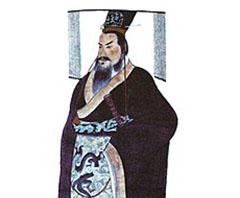
Different records had different illustrations about Qin Shi Huang’s look. “Biographic Sketch of Qin Shi Huang” tells us that Qin Shi Huang was not as strong as we thought. He suffered from several physical disabilities like trachitis and had a very uncomfortable look. While “Wei Zhu” describes Ying Zheng to be a very tall (1.98m) man with a high nose, slim eyes, and pigeon chest. Historians tend to take the second opinion.
2.Was Qin Shi Huang a bastard?
Qin Shi Huang was born in Zhao State, and he was given the family name of his mother. However, some people believed that Zhao Zheng/Ying Zheng should be called Lv Zheng as his biological father was Lv Buwei. According to “Shi Ji," when Ying Zheng’s father Zi Chu was taken hostage in Zhao State, a political speculator named Lv Buwei (later prime minister of Qin Shi Huang) conspired with Zi Chu and promised to make him the king of Qin State. Lv also managed to marry a dancer named Zhaoji, who was already pregnant with Lv’s baby, to Zi Chu. After Zi Chu died, the baby (Zhao Zheng) came to the throne, and Lv Buwei would be a regent.
However, this idea is simply wrong. “Shi Ji” also told us that Qin Shi Huang was born in January, and his mother was gifted to Zi Chu in December. Therefore, Qin Shi Huang couldn’t be Lv Buwei’s bastard son.
3.Was Qin Shi Huang a tyrant or a brilliant leader? 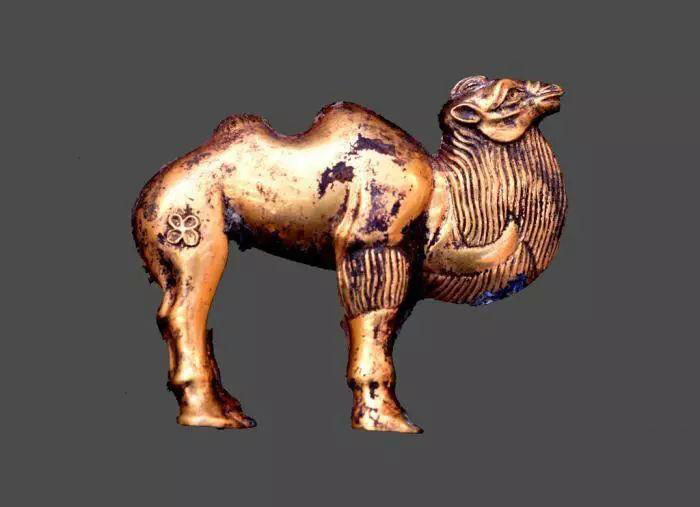
People have complicated feelings about Qin Shi Huang. Some believe he was a complete tyrant, who murdered his father, house-arrested his mother, restricted the freedom of thoughts, buried intellectuals.
Some people sought excuses for what he did and admired him being a brilliant leader. Qin Shi Huang’s mother, Dowager Zhao, and his father (not true) Lv Buwei were very powerful when he came to the throne. He had to eradicate them to rule. After the Qin dynasty was established, Qin Shi Huang practiced legalism, which inevitably induced some dissatisfaction among other schools' scholars. Some scholars blamed him, and alchemists deceived him. Qin Shi Huang, although too radical, took action to consolidate his reign.
Nevertheless, Qin Shi Huang was an outstanding man. He became king at 13, exiled a powerful man like Lv Buwei at 22, began to unify the whole country at 23, and he achieved unification at 38. He set up a series of administrative models still in use today to ensure the country's smooth operation. As for the building of Epang Palace, Lishan Mausoleum, and Great Wall, it has something to do with his times and personal character.
4.Who was the empress of Qin Shi Huang? 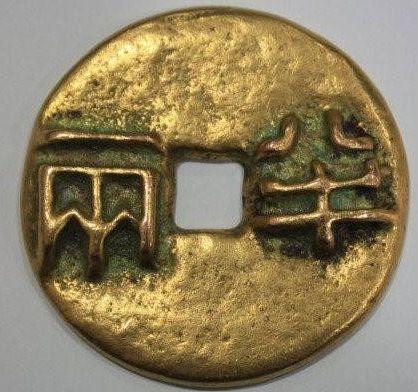
There is no historical record that can reveal the empress of Qin Shi Huang. We only know that Qin Shi Huang had many mistresses, who gave him 21 children, but who was the empress? The possible fact is that he didn’t have an empress. Traditionally, the empress and emperor were buried together. But there was no space or evidence in Lishan Mausoleum suggesting another tomb. Some speculated that Qin Shi Huang took the lesson from his mother, who grasped the power and tempted to raise an uprising with eunuchs and deliberately belittled the empress. He purposefully made a separate tomb for his empress. However, there is no chronicle backing the idea.
5.What was Qin Shi Huang’s tomb look?
For thousands of years, people imagined from the pieces of historical chronicles and the relics discovered in site how majestic and extravagant the tomb's interior must be. However, the limitation of modern technology prevents us from excavating this enigmatic tomb. To better protect the grave, the Chinese government decided to leave it as it is.
Related Articles:
The Great Wall of China
Museum of Terra-cotta Warriors and Horses
Qin Dynasty - Facts, Establishment, Fall, and Qin Shi Huang's Achievements
Recommended Itineraries:
Customized Day Tour to Terracotta Army and Other Sites
Half Day Terracotta Army Tour with Mini-warrior Making Experience
Terracotta Army Day Tour with Local Food Exploration

 sought refuge in his mother, Zhaoji’s family, at early age. In 247 B.C, with the death of King Zhuangxiang, Ying Zheng was made King Qin at 13. A powerful minister named Lv Buwei served as the prime minister to assist the young monarch. Qin Shi Huang reluctantly respected him as Zhong Fu (almost equal to father). Eight years later, Qin Shi Huang reached 21 and began to rule himself. Lv Buwei became an obstacle, and his secret affair with Qin Shi Huang’s mother, Dowager Zhao, would only make things worse. Qin Shi Huang managed to restrain Lv's power and exiled him. Lv was also a smart man. He gifted a fake eunuch named Liao Du, who was also one of his hangers-on, to Dowager Zhao before leaving the court. This way, he could still have a certain influence over the dowager. Anyway, Qin Shi Huang successfully began his reign.
sought refuge in his mother, Zhaoji’s family, at early age. In 247 B.C, with the death of King Zhuangxiang, Ying Zheng was made King Qin at 13. A powerful minister named Lv Buwei served as the prime minister to assist the young monarch. Qin Shi Huang reluctantly respected him as Zhong Fu (almost equal to father). Eight years later, Qin Shi Huang reached 21 and began to rule himself. Lv Buwei became an obstacle, and his secret affair with Qin Shi Huang’s mother, Dowager Zhao, would only make things worse. Qin Shi Huang managed to restrain Lv's power and exiled him. Lv was also a smart man. He gifted a fake eunuch named Liao Du, who was also one of his hangers-on, to Dowager Zhao before leaving the court. This way, he could still have a certain influence over the dowager. Anyway, Qin Shi Huang successfully began his reign.
 sent a famous assassin named Jing Ke to perform the task in 227 B.C. However, the operation failed, and consequently, Qin Shi Huang was infuriated.
sent a famous assassin named Jing Ke to perform the task in 227 B.C. However, the operation failed, and consequently, Qin Shi Huang was infuriated. So be entitled himself the Shi Huang Di (the first emperor). Hecontinued to rule under the guidance of legalism. The whole country was divided into 36 prefectures (which later was added to 46 prefectures), and the Xianyang was made the capital city. There are three ministers, Chengxiang (prime minister), Yushi, and Taiwei, arranged to assist Qin Shi Huang in court. Qin Shi Huang himself appointed officials to govern the local counties.
So be entitled himself the Shi Huang Di (the first emperor). Hecontinued to rule under the guidance of legalism. The whole country was divided into 36 prefectures (which later was added to 46 prefectures), and the Xianyang was made the capital city. There are three ministers, Chengxiang (prime minister), Yushi, and Taiwei, arranged to assist Qin Shi Huang in court. Qin Shi Huang himself appointed officials to govern the local counties.  made. Some Confucian scholars disagree with Qin Shi Huang’s extravagance and the quest for elixirs. They also reproached other policies Qin Shi Huang set up. The prime minister Li Si suggested Qin Shi Huang burn those classics that were not teaching legalism. Therefore, tons of classics were burned, and people tried to protect such books were punished.
made. Some Confucian scholars disagree with Qin Shi Huang’s extravagance and the quest for elixirs. They also reproached other policies Qin Shi Huang set up. The prime minister Li Si suggested Qin Shi Huang burn those classics that were not teaching legalism. Therefore, tons of classics were burned, and people tried to protect such books were punished. Hai (the eighteenth son of Qin Shi Huang) to ascend the throne and threatened the prime minister Li Si to agree. He also forged the imperial edict saying that Qin Shi Huang made Hu Hai the next emperor and demanded Fu Su, the eldest son of Qin Shi Huang, to commit suicide. To prevent any fuss on the way back to Xianyang, Zhao Gao suppressed the death of Qin Shi Huang. It was in July, and Qin Shi Huang’s corpse rotted quickly. To cover the smell, Zhao Gao and Hu Hai ordered abalones to be loaded on the cart. When they made it to Xianyang, Zhao Gao and Hu Hai buried Qin Shi Huang to Lishan Mausoleum. Hu Hai became the emperor, and Zhao Gao became the real power-holder.
Hai (the eighteenth son of Qin Shi Huang) to ascend the throne and threatened the prime minister Li Si to agree. He also forged the imperial edict saying that Qin Shi Huang made Hu Hai the next emperor and demanded Fu Su, the eldest son of Qin Shi Huang, to commit suicide. To prevent any fuss on the way back to Xianyang, Zhao Gao suppressed the death of Qin Shi Huang. It was in July, and Qin Shi Huang’s corpse rotted quickly. To cover the smell, Zhao Gao and Hu Hai ordered abalones to be loaded on the cart. When they made it to Xianyang, Zhao Gao and Hu Hai buried Qin Shi Huang to Lishan Mausoleum. Hu Hai became the emperor, and Zhao Gao became the real power-holder. meters, the entire mausoleum has a ceiling cast by copper and encrusted with pearls, representing the universe with planets, and a vast expanse of seas and rivers made of mercury. Outside the mausoleum, there were two layers of walls separating the royal palace and the imperial city. Historical records tell us that there were over thousands of palaces, burial pits, and small tombs filled with treasures and relics. Not far from the mausoleum, an underground Terracotta Army was supposed to protect Qin Shi Huang in the underworld. To prevent any future grave-robbing, Qin Shi Huang also demanded all kinds of gears and tricks be facilitated inside the tomb. After the tomb was complete, the tomb's exits were sealed, and laborers were buried alive (under Hu Hai’s command). Qin Shi Huang had made his point very clear. He regarded himself as an emperor even in the afterlife. To protect his reign, he built the entire human world he knew underground, even the Qin army.
meters, the entire mausoleum has a ceiling cast by copper and encrusted with pearls, representing the universe with planets, and a vast expanse of seas and rivers made of mercury. Outside the mausoleum, there were two layers of walls separating the royal palace and the imperial city. Historical records tell us that there were over thousands of palaces, burial pits, and small tombs filled with treasures and relics. Not far from the mausoleum, an underground Terracotta Army was supposed to protect Qin Shi Huang in the underworld. To prevent any future grave-robbing, Qin Shi Huang also demanded all kinds of gears and tricks be facilitated inside the tomb. After the tomb was complete, the tomb's exits were sealed, and laborers were buried alive (under Hu Hai’s command). Qin Shi Huang had made his point very clear. He regarded himself as an emperor even in the afterlife. To protect his reign, he built the entire human world he knew underground, even the Qin army.

